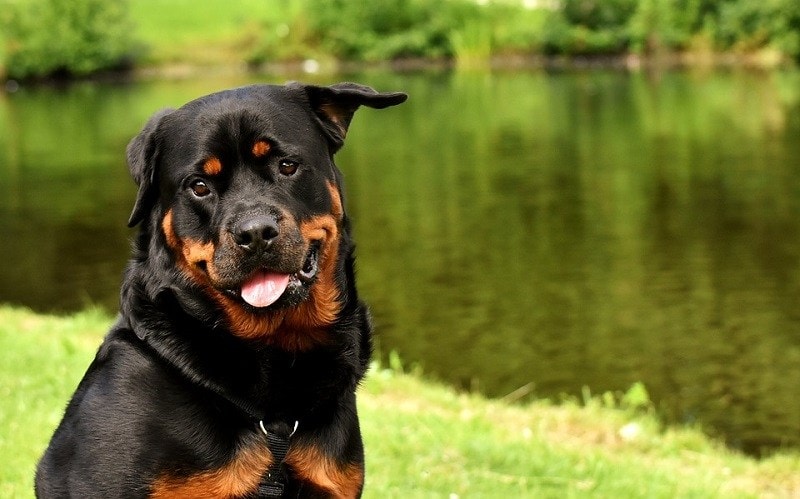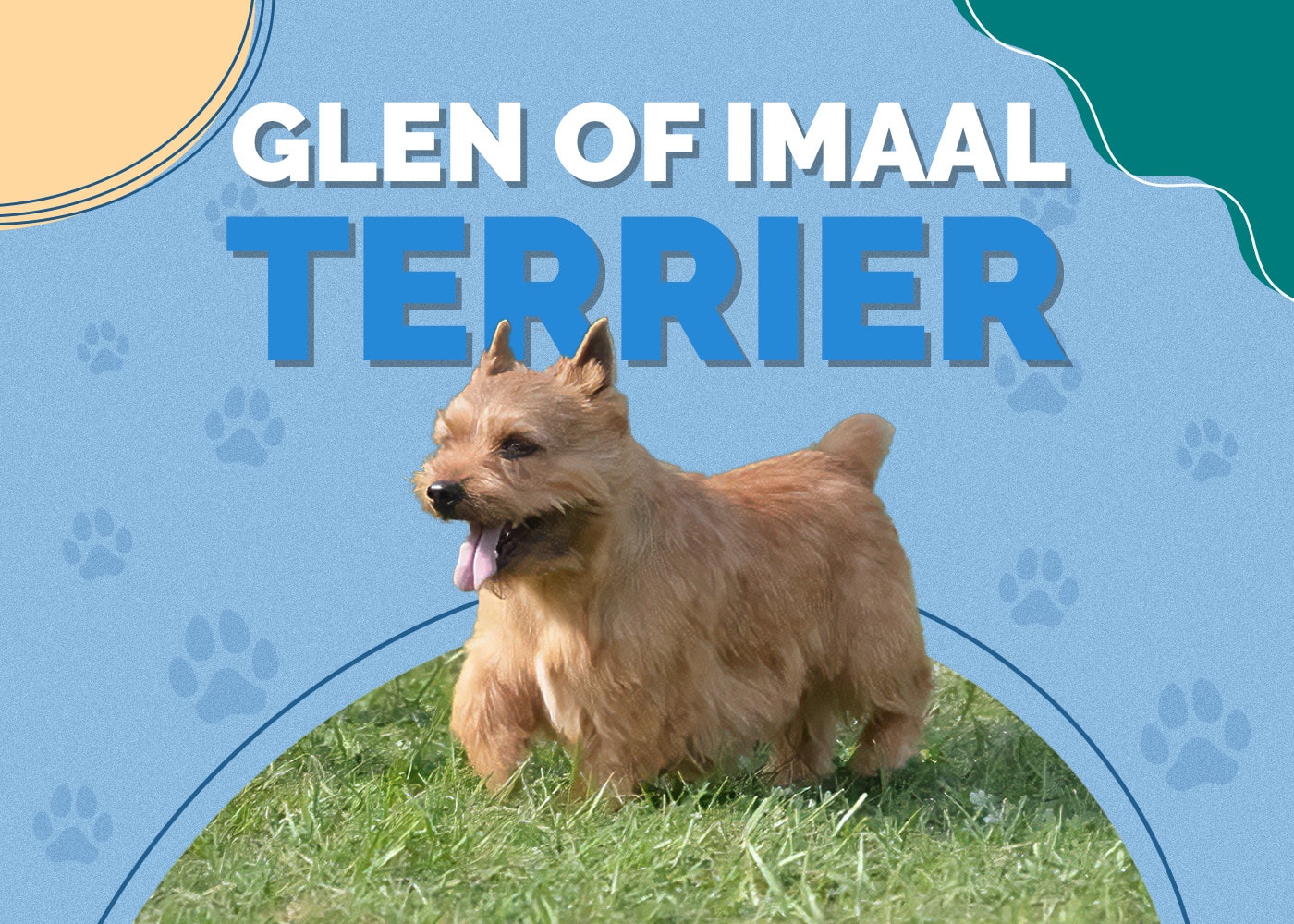21 Low-Energy Dog Breeds: Vet-Approved Facts and Pictures

Updated on
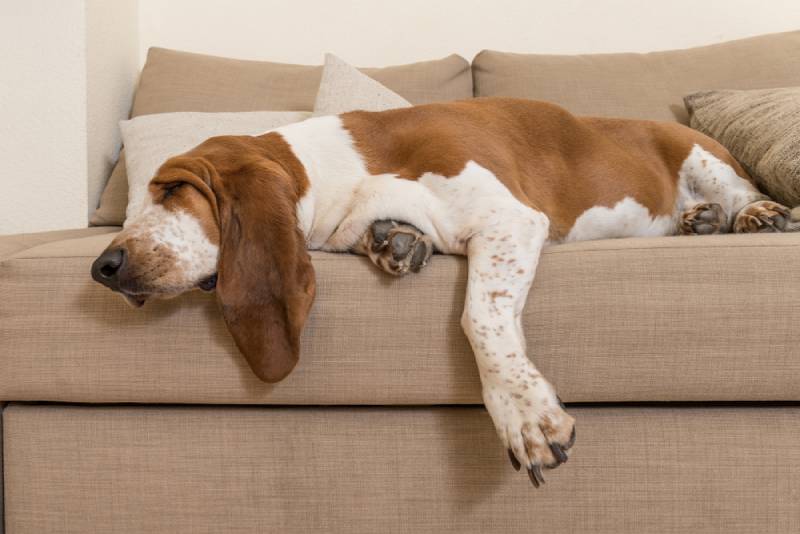
Having a dog doesn’t mean continually having to go out on walks or climb up mountains to wear them out. One of the most important things to consider when adopting a breed is that their energy levels match your lifestyle.
If you prefer to spend your free time indoors, a low-energy dog breed is going to be a better match for you. There are plenty of low-energy dogs, from big to small. They enjoy a good cuddle or snooze fest just as much as, if not more than, spending time in the great outdoors.
However, don’t be fooled. Having a low-energy dog breed does not mean they do not need physical exercise and walks. Every dog requires both physical and mental stimulation every single day to have a happy, healthy, and fulfilled life. And every dog is different. There are “lazy” individuals in the high-energy breeds, while your low-energy pooch might enjoy a very active lifestyle.
The 21 Low-Energy Dog Breeds
1. Newfoundland
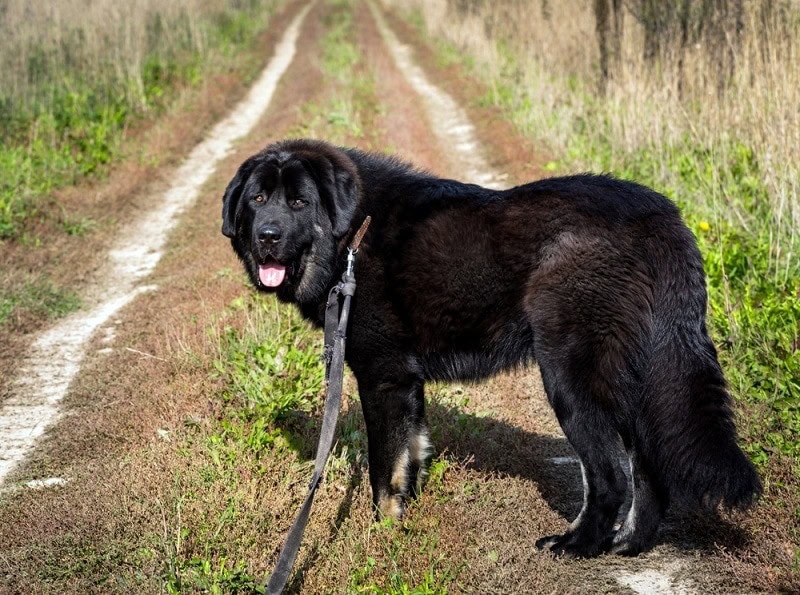
It might surprise people how many large-breed dogs are considered to be low to moderate in energy. The Newfoundland is among these pups.
As adults, they almost always weigh over 100 pounds, both male and female. Hauling all of this weight around from place to place is tiring. When they do not have to be moving, they are happy to laze about and cuddle up on the sofa.
Newfoundlands are classed as large-breed working dogs. They do have a great deal of stamina and a hard work ethic. For them, slow and steady is the best way to get the job done. Take them swimming when they need exercise, and they will love you even more for it. Half-hour walks or play sessions each day are the minimum they require.
2. Basset Hound
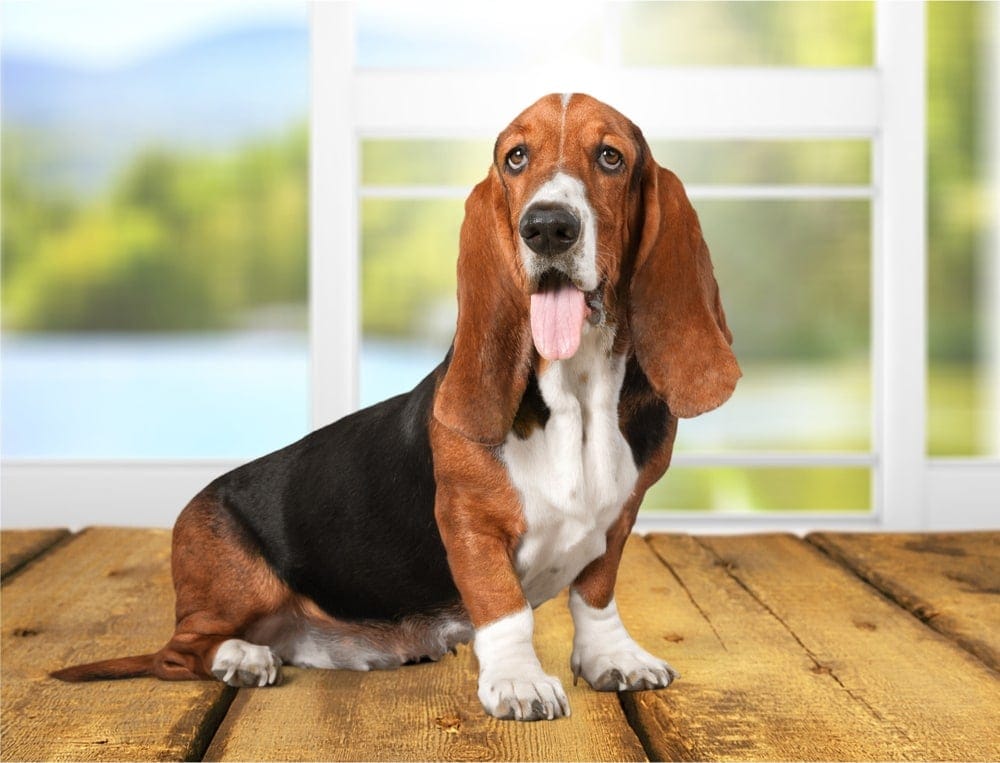
Basset Hounds are one of the most stereotypical low-energy, lazy-day dog breeds out there. With ears that droop to the ground and big, sad eyes, they look quirky even when they are in motion. Everything about their appearance seems to be trying to pull them to the ground again.
These dogs only need about an hour’s worth of exercise a day. This exercise can be low-key, though. A couple of walks around the neighborhood or the park or a few romps in the yard will satisfy them. They can be stubbornly lazy, though.
Even if they do not want to get out, you should take them daily. Basset Hounds struggle with obesity as a breed, and their lifespans will be much shorter if they are left to control their weight themselves.
3. Saint Bernard
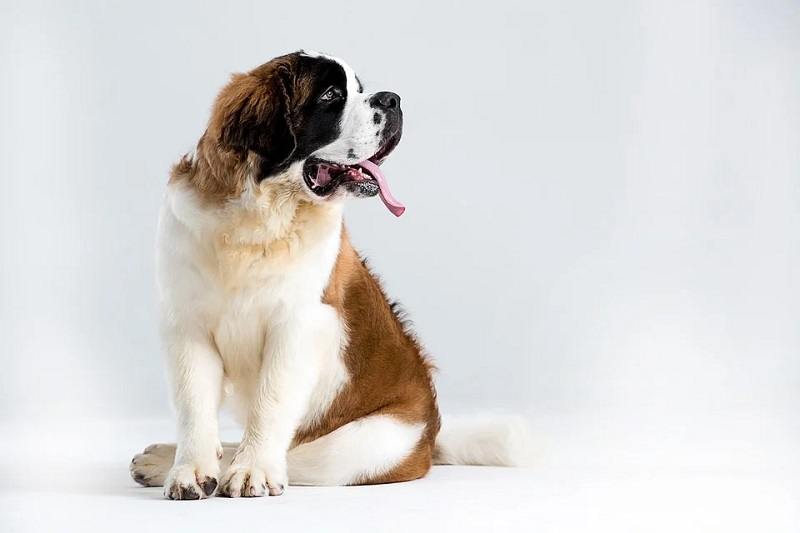
Saint Bernards are the drooly dogs that became movie stars in the early 2000s. They saw a rise in popularity around the U.S. and Europe during this time.
A Saint Bernard is a giant dog breed that grows quickly throughout their puppy years. Due to this exponential growth rate and ultimate size of well over a hundred pounds, they can suffer from quite a few health issues. These include problems with their bones and joints.
Because of this, it is actually recommended to give only a finite amount of exercise to a Saint Bernard during their puppy stage and young adulthood. Be careful with the type of activity as well. Going for a run is not as recommended, but a walk or slow hike are more appropriate. They love to spend time with their owners and their energy levels are often moderate, so they can suit a more active owner but will also enjoy a laid-back life. Still, they require an hour-long walk daily or frequent, short but active play sessions.
4. Great Dane
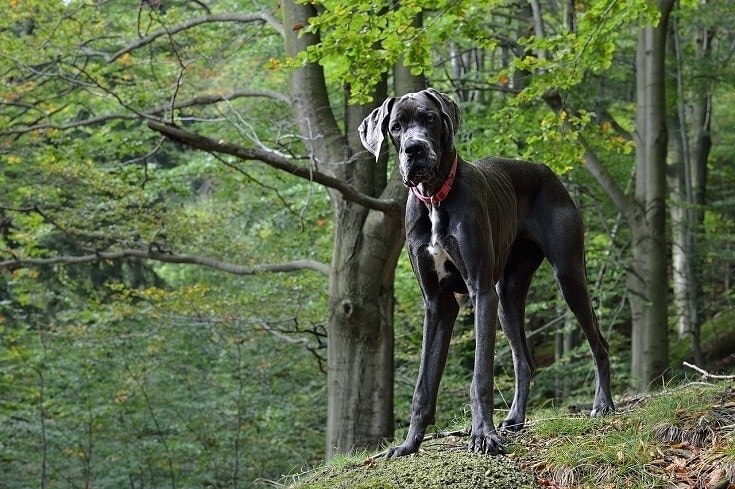
Great Danes are an interesting dog to feature on this list, as their energy level is often actually moderate. However, they earned their spot here because of their calm, sedate personalities in the home.
They are happy to laze about all day when they are in confined spaces. Great Danes are low-energy dogs in the home, but they need a fair amount of exercise daily. They should be taken on several brisk walks a day, allowed to run free in a dog park or other outdoor space, or taken for slow runs and hikes, but only after they are fully grown. Then, when they return home, they will happily crash into whatever spot is the softest. They can be great dogs for agility, obedience training, and other sports.
5. Greyhound
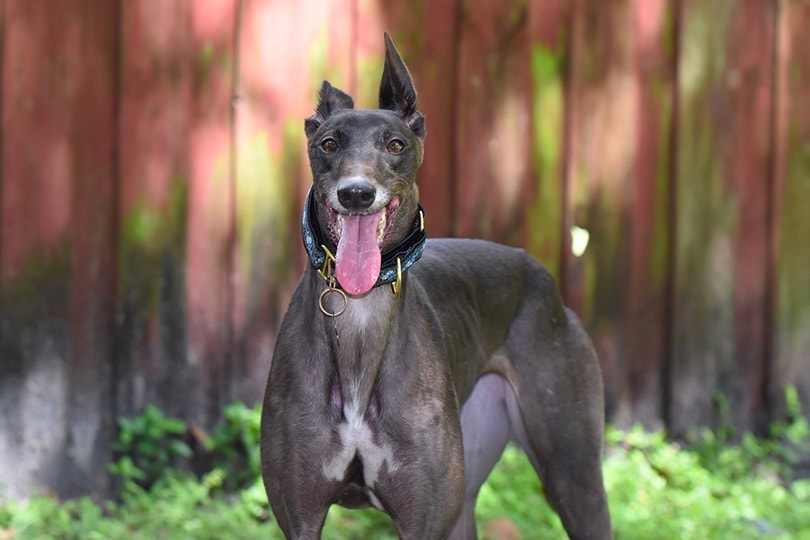
Greyhounds are similar in their personalities and activity requirements as Great Danes. They are dogs bred to sprint and are used in dog races in Great Britain and America. Their energy levels are higher than some of the breeds already mentioned, but they are generally calm and gentle.
These sports are no longer as common due to ongoing debate about welfare issues, and Greyhounds are typically simply a beloved family pet. Take them out for several walks a day, but also make sure you find a secure and fenced off spot for them to run in.
Greyhounds are renowned not only for their affinity for running but also for their love for blankets. In the home, you are likely to find them cuddled under whatever blanket they can find.
6. English Mastiff
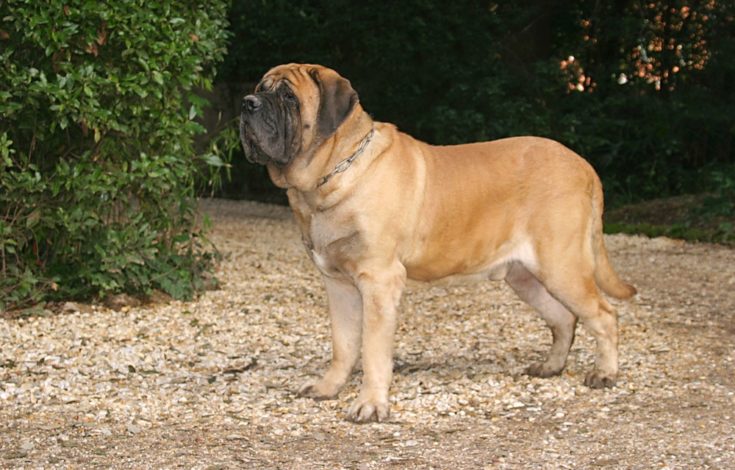
English Mastiffs, like most Mastiffs, have a rather intimidating appearance. They are enormous dogs and seem to be mostly muscle. While they are classified as a working dog, they exhibit a giant dog breed’s typical tendencies, including lower energy when not doing a job.
They are loving and quite protective. This means that they need plenty of socialization early on, so they know how to behave well around other dogs and people. They also drool quite a bit, so watch out for any spot that they have recently been lying in.
Similar to other giant dog breeds, any exercise they get should be low impact. Over-exercising them during growth and development can lead to health issues in their bones and joints.
7. Dogue de Bordeaux
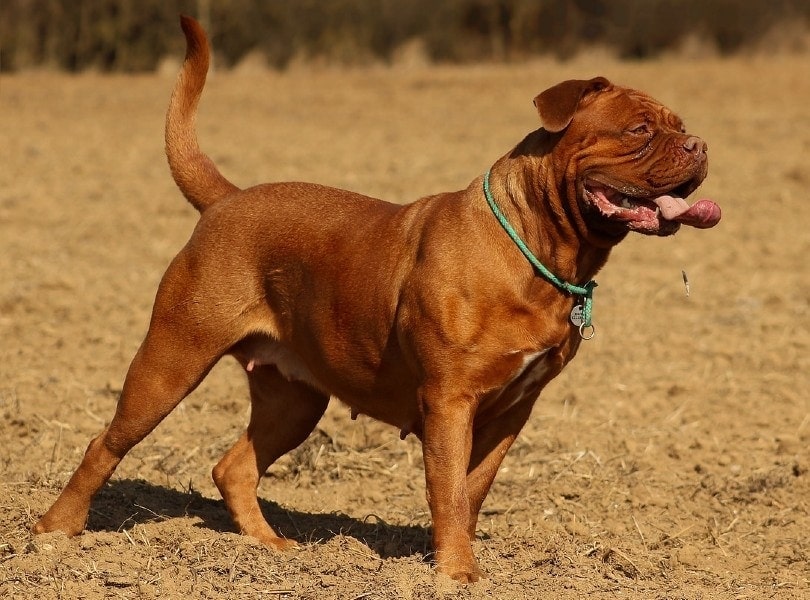
The Dogue de Bordeaux can leave a trail of drool wherever they roam. This is a large, intimidating breed. Focus on socializing them early so they understand how to behave around other animals and people properly. They have adorable, wrinkled, serious faces and droopy jowls, but do not let this relaxed appearance fool you when introducing them to new situations.
The Dogue de Bordeaux only needs about 45 minutes to an hour’s worth of exercise each day. Keep it low-impact to protect their joints and bones.
8. Cavalier King Charles Spaniel
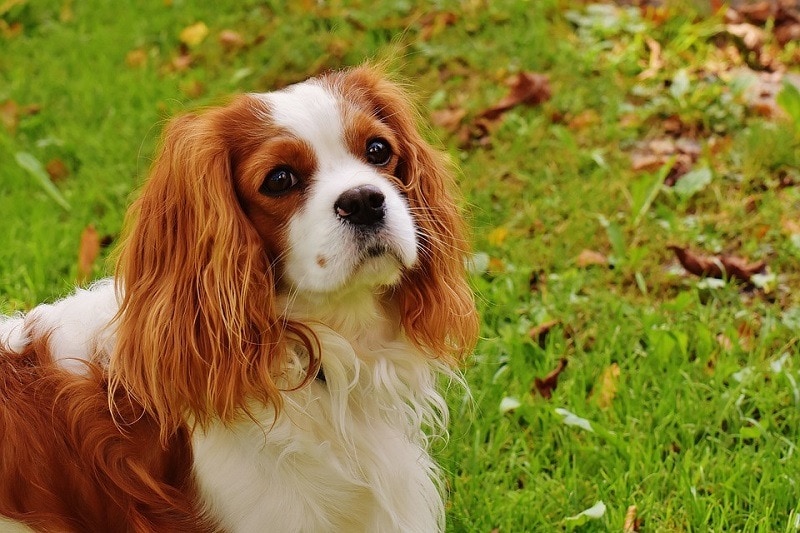
Cavalier King Charles Spaniels are low-key, low-maintenance dogs who love nothing more than an afternoon inside. These little dogs have quite a history of being a lapdog to nobility and royalty. They do need plenty of time with their humans, and some may suffer from separation anxiety if left alone for too long.
Cavaliers thrive more from human contact than any kind of high-intensity exercise. They need around an hour of activity each day, from leisurely walks in the park to a stroll through your neighborhood.
9. Maltese
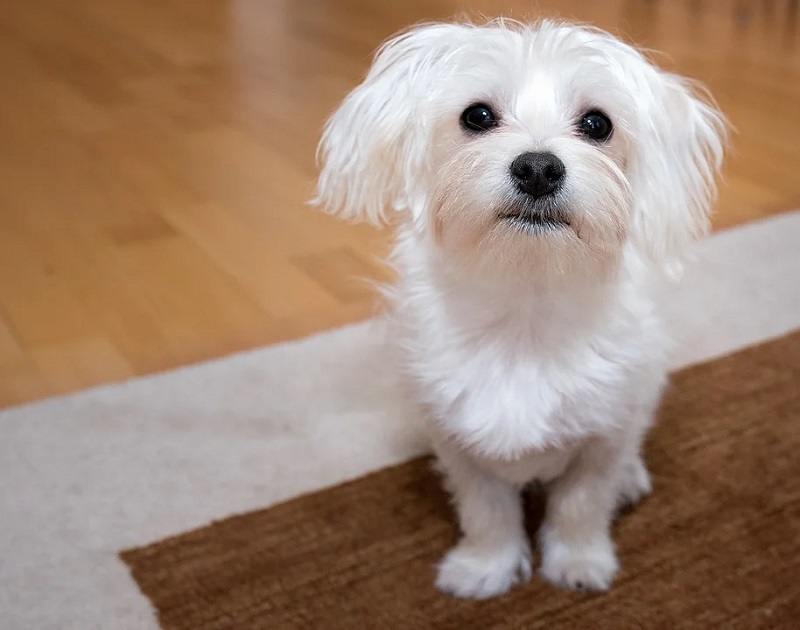
Malteses are comical little dogs who love to put on a show. They need to be the center of attention and crave time around people. They are tiny dogs, though, so as many steps as a walk is for you, it ends up many more for them.
Their size and energy level makes them ideal for living in apartments and urban scenarios. They are lively, but it doesn’t take much to tire them out where they need a break.
Give your Maltese around 30 minutes of exercise each day and you will keep them in tip-top shape.
10. French Bulldog
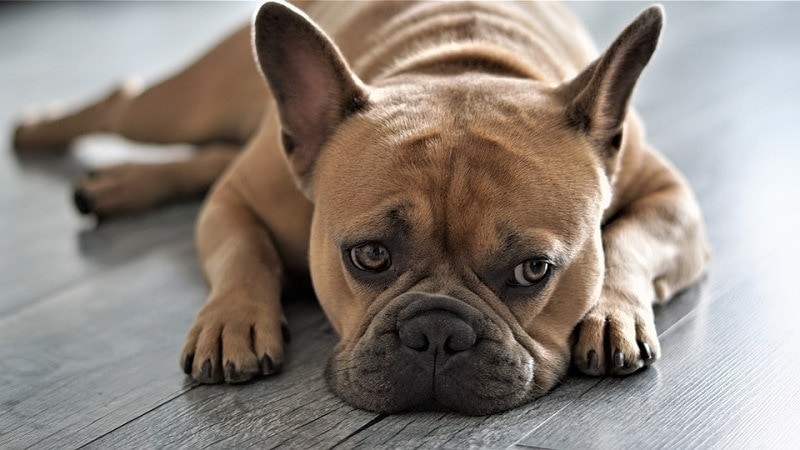
The French Bulldog, or Frenchie, is a small breed with a lively personality. They are a low- to medium-energy pup that suits apartment living easily.
Since Frenchies are brachycephalic, they should never be over-exercised. It can end up nearly fatal, especially in hot weather. They have trouble breathing through their shortened snouts and can overheat quickly.
French Bulldogs should receive about an hour of exercise each day. They should get several short walks spread out, with quality cuddle sessions and mental stimulation in between. Avoid exercise that involves jumping or using a lot of stairs, as they can injure their back easily and are prone to intervertebral disc disease.
11. English Bulldog
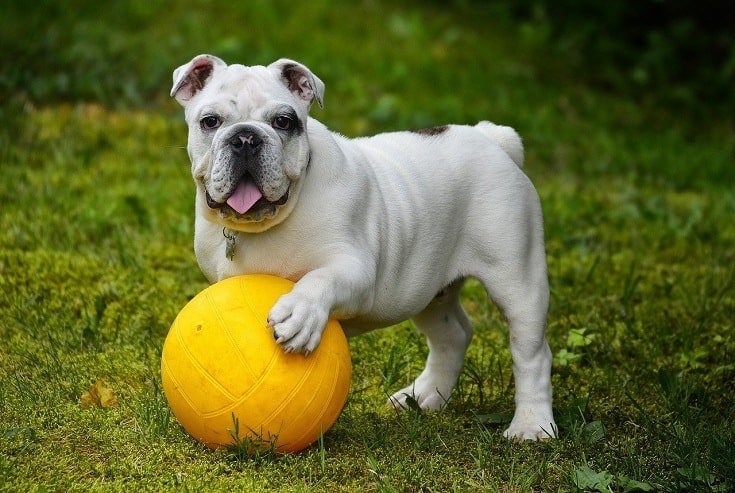
English Bulldogs are renowned for being one of the laziest dogs there is. Their desire for lack of motion and activity sets them apart in the dog world. It is more common to see one of these dogs being pulled along by their owners than it ever is to see one willingly run.
It can be an incredible thing to witness, though, when the English Bulldog does decide to break away from their typical sluggish pace. They do not have much stamina but can exhibit great bursts of speed if the situation requires it.
Since Bulldogs struggle with obesity, it is important to get them out daily for around an hour of exercise. These are often slow walks, but try and throw in something more strenuous every once in a while to get their blood pumping. Avoid exercising them in hot and humid weather, as they will struggle with heat due to their brachycephalic conformation. Also avoid jumping or repetitive stairs so they don’t injure their backs. They may love streams and puddles, but avoid pools deeper than their elbows and supervise them while swimming.
12. Pug
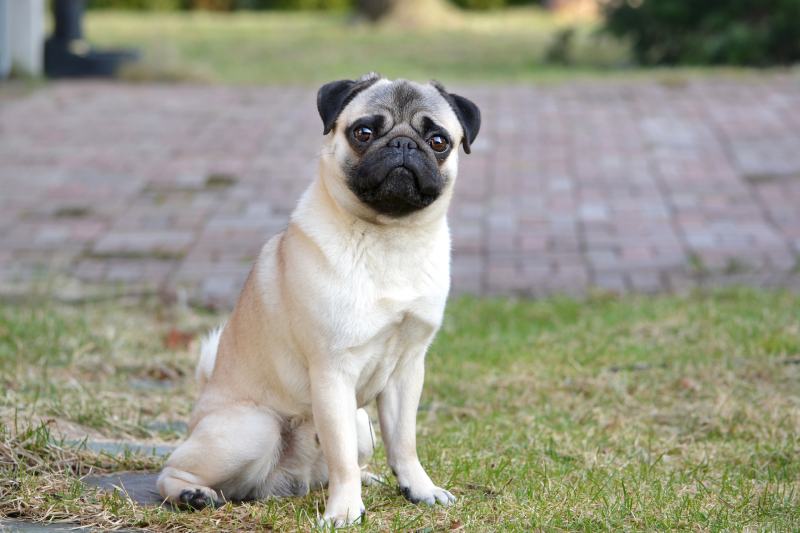
Pugs are stereotypical lapdogs. They love attention much more than large amounts of activity.
Pugs have a grand history of being the companion to royalty and nobility. They used to be larger dogs but have been bred down to become a toy breed with little legs. These are also brachycephalic pups and shouldn’t be overworked, especially in warm and humid weather.
Take your Pug out for about 40 minutes of exercise a day. Make it a gentle walk or a play in the park and they will be happy to sleep and snuggle for the rest of the day. They are prone to obesity, so make sure you monitor their caloric intake.
13. Shih Tzu
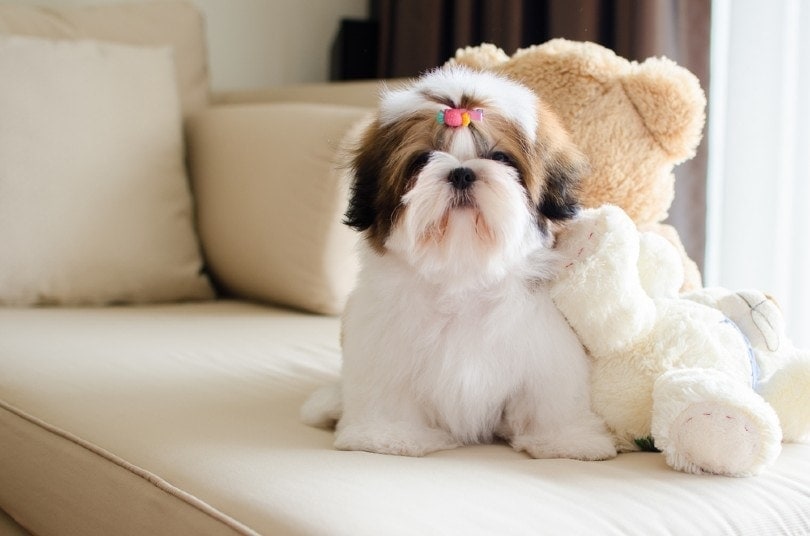
Shih Tzus are a similar size and shape to the Maltese. Typically, they have more brown and gray in their coats than their pure white counterparts.
Shih Tzus still require daily exercise, but they only need a minimal amount to keep them happy and healthy. They always have plenty of antics around the house and suit apartments well.
Taking a Shih Tzu out for walks twice each day for about 15-30 minutes is generally more than enough for them. You can also keep them busy with puzzles and mind games.
14. Japanese Chin
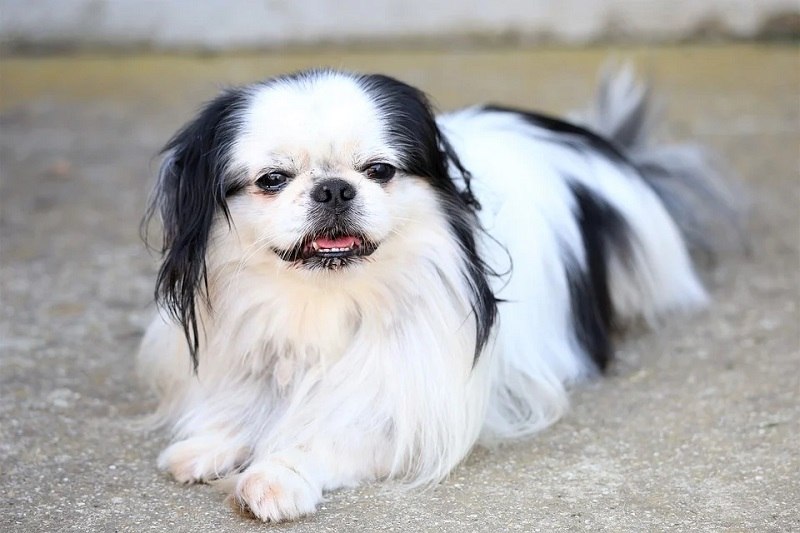
The Japanese Chin is far too elegant to be bounding around the home and amusing you with quirky acts. They prefer to be a picturesque lapdog rather than someone’s active companion. They are calm and controlled, and an elegant small dog for low-energy households. They do have spikes of high activity and can be stubborn at times but are relatively easy to train.
They do still need activity every day to stay healthy. Take them for a couple of shorter walks that add up to about 30 minutes of activity and they will be satisfied.
15. Irish Wolfhound
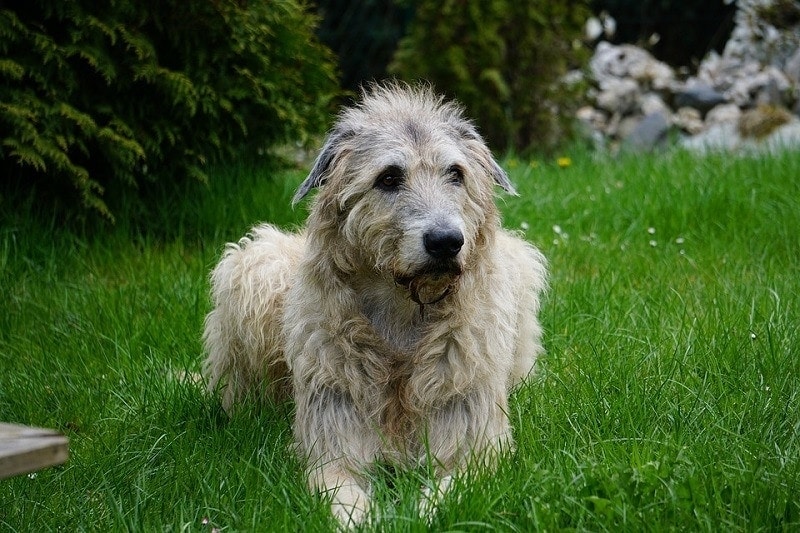
Irish Wolfhounds are a grandfatherly breed. They have shaggy coats of tan, brown, or white fur that make them look elderly from a young age. Combined with a lovable personality, they do not receive as much attention as the breed deserves.
These dogs are similar in their activity requirements as Great Danes. They need a minimum of 2 hours of exercise daily, but they are reserved and calm when they are in the home.
Be careful with this large-breed dog. If you adopt them as a puppy, slowly and carefully increase the duration and intensity of exercise. Doing so helps support their joints as they age.
16. Whippet
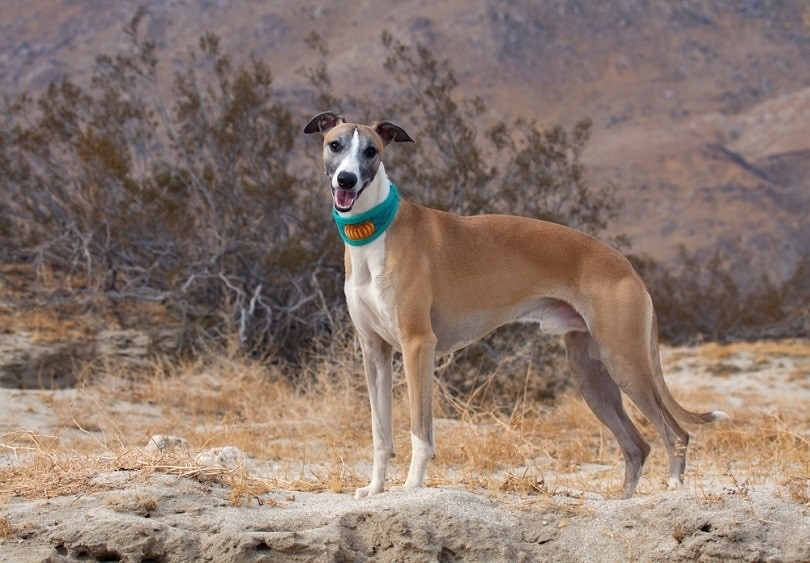
Whippets appear to be a smaller version of a Greyhound, but they have long been a distinctly separate breed.
These skinny dogs can seemingly run for days on end, and they do need at least an hour of exercise each day. However, their love for a cozy blanket can’t be matched by almost any other breed. In the home, they will pull them off sofas or cuddle into your lap to find as warm and fuzzy a place as possible.
17. Bernese Mountain Dog
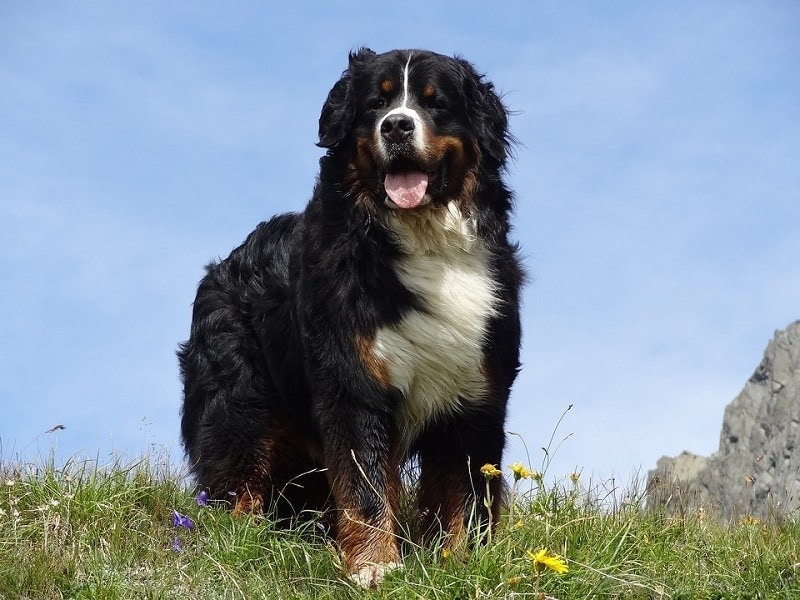
The Bernese Mountain Dog is a giant breed dog. They have a history of being a working breed, herding and hauling materials throughout the Swiss Alps.
Since they are so large, they often have issues with their joints and bones as they age. However, their muscles and breeding give them a hardier build than some similar breeds.
Try to give your dog a minimum of 30 minutes of activity each day, although closer to 90 minutes will keep them in prime condition. Make sure to never exercise them after a meal or after drinking large amounts of water, as they are prone to life-threatening gastric dilatation and volvulus.
- You May Also Like:How Much Does a Bernese Mountain Dog Cost?
18. Chow Chow
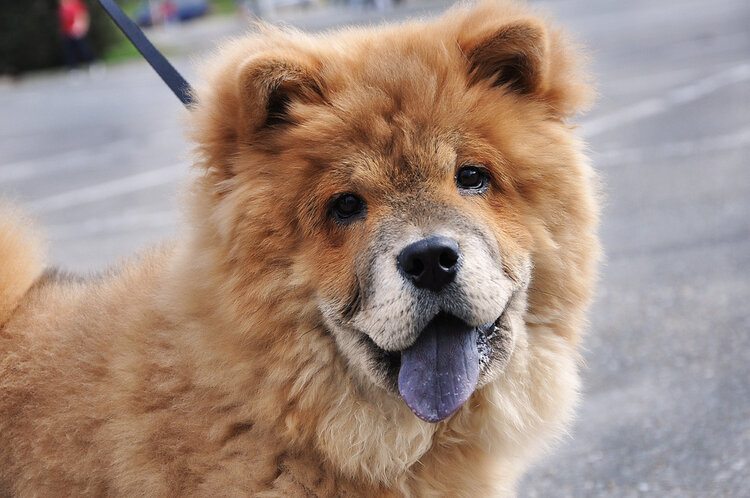
Chow Chows are another poised dog hailing from the mysterious mountain areas of China. They are one of the larger breeds that have come from Asia.
Chow Chows are easily recognizable by their red-brown coats and wrinkled skin all over their body. They are droolers and have jowls that hang. Their unique characteristic is the blue and black tongue, which is due to pigment deposition.
These pups prefer to sit and observe more activities than they would care to participate in, but they still need a moderate amount of daily exercise. Take them out for three or four walks averaging 15-30 minutes each day and they will stay happy and healthy. Avoid walking them in hot and humid weather.
19. Pekingese
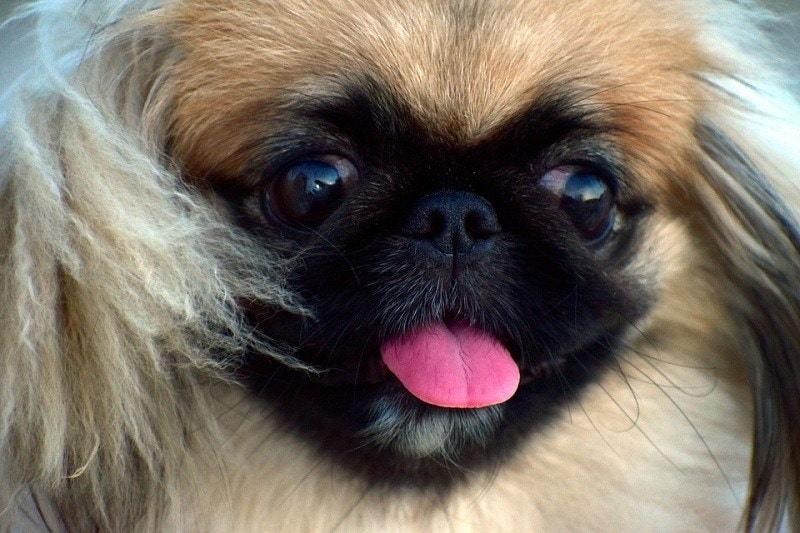
The Pekingese often looks more like a poofy ball of fluff than a noble dog. They have short legs that are usually covered by all their fur if they haven’t recently been groomed.
The combination of a large amount of fur and a brachycephalic face makes it extremely easy for them to overheat. They need only one or two short walks each day at a slow pace.
Because of their extremely low maintenance when it comes to daily activity, Pekingese make excellent pets for the elderly.
20. Cardigan Welsh Corgi
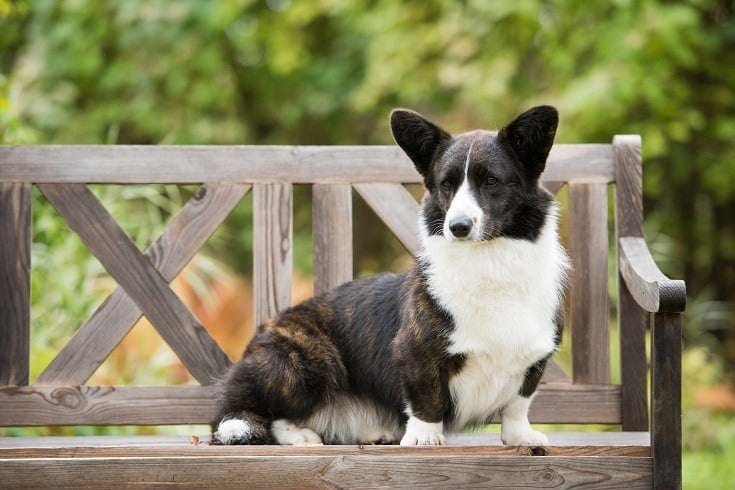
Cardigan Welsh Corgis are a dwarf-looking dog breed. With their large ears, foxlike faces, and stubby legs, they have no trouble eliciting laughs and creating joy.
Corgis are notoriously curious dogs with short attention spans, so it is best to keep them on a leash. However, they are also relatively low-energy, and once an area is explored, your lap is the next place they want to be. They are very adaptable, easy to train, and love playing with balls.
Take your Corgi out for several gentle walks each day to keep them healthy. Be careful with high-intensity activities, jumping, or stairs because they can struggle with health problems due to their unique body shape.
21. Lhasa Apso
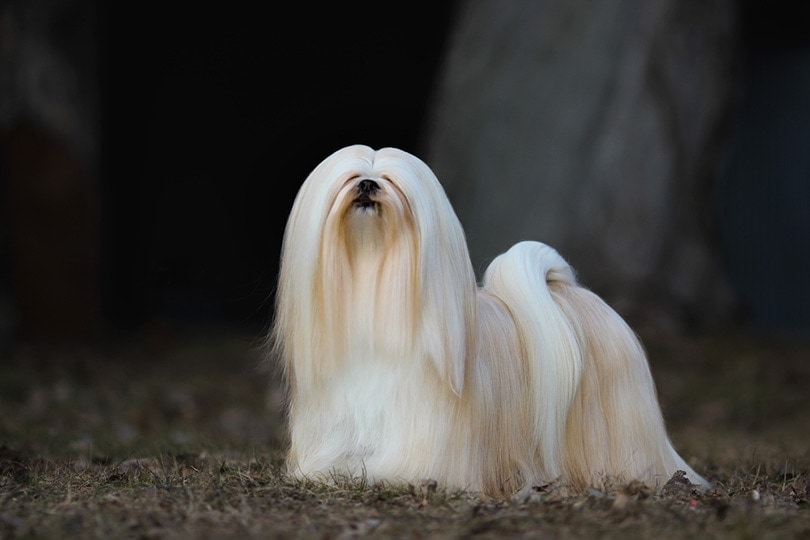
The Lhasa Apso is one of the oldest dog breeds, raised by Buddhist monks to guard the mountain monasteries. Hours of slow patrols and sitting on the alert are bred into them.
They are loving and playful and enjoy running around the house and the yard, but they do not require much activity to stay healthy. They can be taken for one long walk or several shorter ones throughout the day. They enjoy agility and can do scent work, along with other sports and mental activities.
Lhasas have a strong will and a great deal of determination. They can sometimes be challenging to train, so it can be a good choice to combine exercise with training sessions.
Important Considerations
If getting a large, deep-chested dog, like some of the ones we have mentioned in this article, exercise should be completely avoided around meal times, as they can develop gastric bloat or gastric dilatation with a volvulus. This life-threatening illness can happen in other breeds as well and requires urgent surgery.
Please be aware that being considered “lazy” or having low energy should be interpreted with caution in brachycephalic or “flat-faced” breeds of dogs. These dogs are not necessarily lazy but may be struggling to breathe properly, especially when exercising. This means that their level of activity is limited, especially in warm humid climates and summer months. Please choose responsibly when considering these breeds and consult with a veterinarian first. Make sure to familiarize yourself with health risks and the cost of keeping certain dog breeds so you can provide them with the best care throughout their life.
Sudden “laziness” should also not be misinterpreted or regarded as normal, as some dogs may appear lazy in the case of illness or due to age-related issues. Consult with your veterinarian if you have any concerns about your dog’s change in activity levels.
Featured Image Credit: Daniel Myjones, Shutterstock


